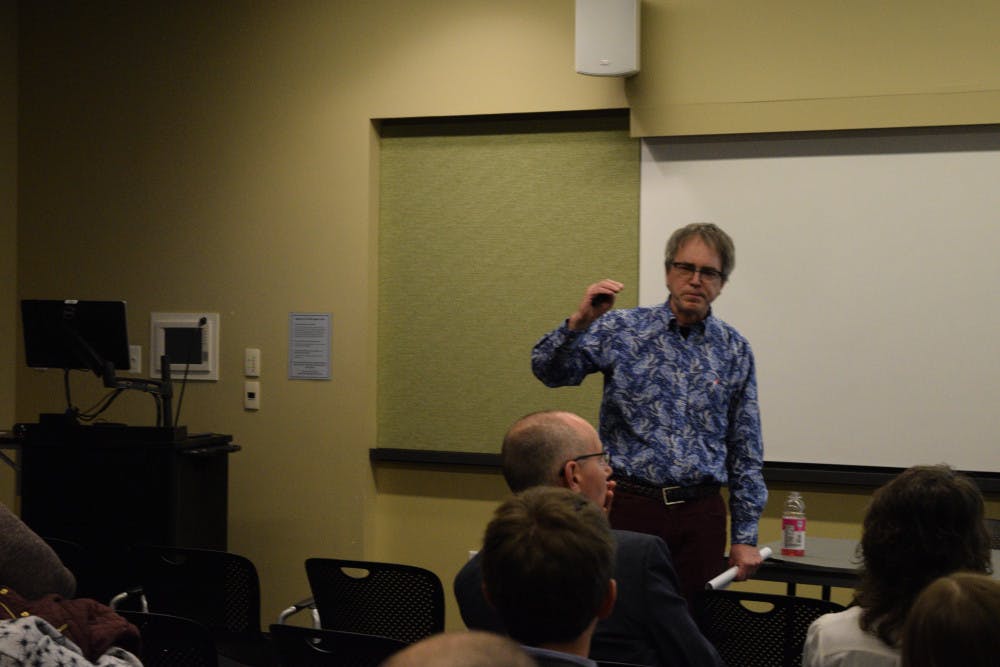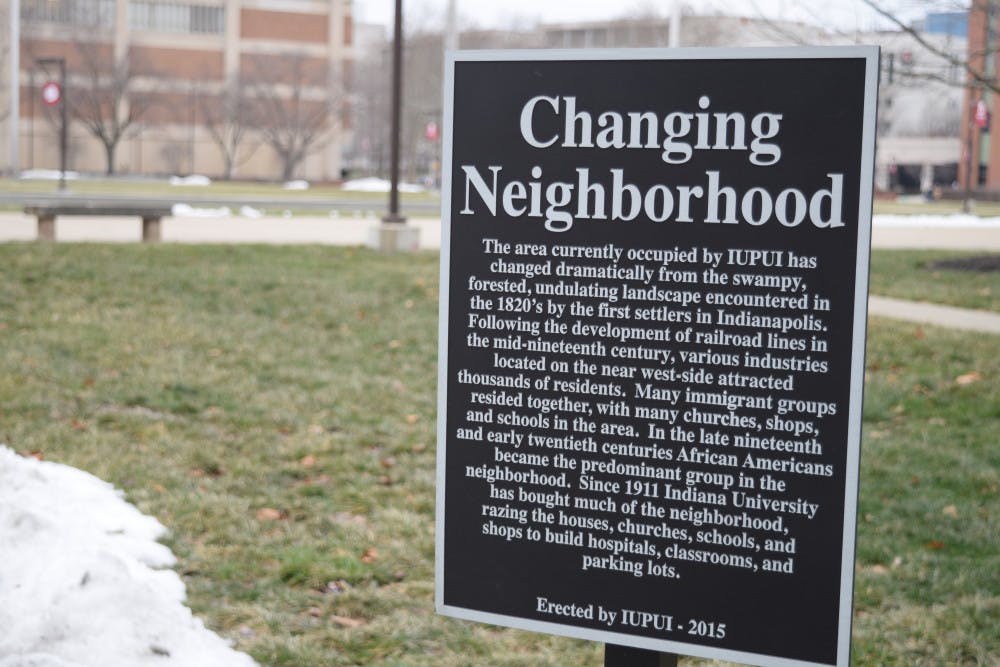IUPUI officially turned 50 on Thursday and celebrated with balloons, cupcakes and speeches. The Campus Center was packed with students and visitors experiencing the campus at its finest. Although IUPUI has much to commemorate, there are those on campus who feel the university needs to own up to its impact on the near west side of Indianapolis to better serve the city.
Dr. Paul Mullins, an IUPUI anthropology professor, presented a short lecture about the archaeological and ethnographic work he and his colleague Dr. Sue Hyatt have conducted for 20 years. "The Price of Progress: Race and Displacement in Indianapolis' Near-Westside” detailed the neighborhood that once existed where IUPUI stands today.

Ransom Place, briefly addressed in the administration’s Report to the Community, is a survivor of this historic community. Change to the near west side began before WWI, but IUPUI’s subsequent expansion left the greatest impact.
The 1950s and ‘60s gave way to urban renewal across the nation. Large cities systematically cleared impoverished, often African-American neighborhoods to make way for infrastructure projects. IUPUI and Indianapolis cooperated in a slightly different fashion. The university bought land acre by acre; later, house by house. After 20 years, the neighborhood was razed.
“It’s not a good or bad, it’s just a different process,” Mullins explained in a prior interview. “We didn’t do mass displacements the way much of Chicago did, for instance.”
But this history is poorly remembered. Mullins described faculty learning inaccurate information over decades. Abbey Chambers, a doctoral student and former advisor for the Herron School of Art and Design, only learned bits of this story while researching John Herron’s legacy.
“Traditional-aged students, probably, don’t think about it unless they’re coming from one of these affected communities,” Chambers said. “How much do we encourage people to think about the history of a place?”
This history is not kept secret. Mullins explained he was never hindered while conducting this research. Plaques describing what once stood on IUPUI property dot the campus but offer few details. But small memorials feel hollow when a university has yet to have institutional conversations about complicity in displacement.

Anna Zaroni, an undergrad video production major, personally studies the distinctly African-American history of the near west side. She feels that IUPUI’s concern for campus-neighborhood relations are superficial without owning up to who was hurt in the name of progress.
“They’re not upfront about this in the ways that I think would align better to what their mission statements are about all,” Zaroni said. She credits faculty, student and community pressure for progress made.
Myron Duff, a doctoral student who works for the Office of Community Engagement, appreciates the opportunities IUPUI gives him but laments the silence surrounding the university’s participation in these misdeeds.
“I think the leadership, starting with Bloomington leadership, needs to make a public apology to this city, particularly African-Americans, for how they were displaced,” Duff said. “And bring them to the table for some of the decision making processes for how things should get established.”
Duff then stated that descent communities should have significant discounts to attend IUPUI, and public ownership of guilt is a starter.
Both Mullins and Zaroni shared the idea for students to engage with this history during orientation. Students could engage with community elders and descendants and make productive conversation.
“For many of us, faculty, staff and students, we’re going to do community-based work,” Mullins said. “It makes no sense to rush the hell out into the city not knowing some of these histories that affected the west side and highway displacement throughout downtown.”
Price of Progress

Heads up! This article was imported from a previous version of The Campus Citizen. If you notice any issues, please let us know.




